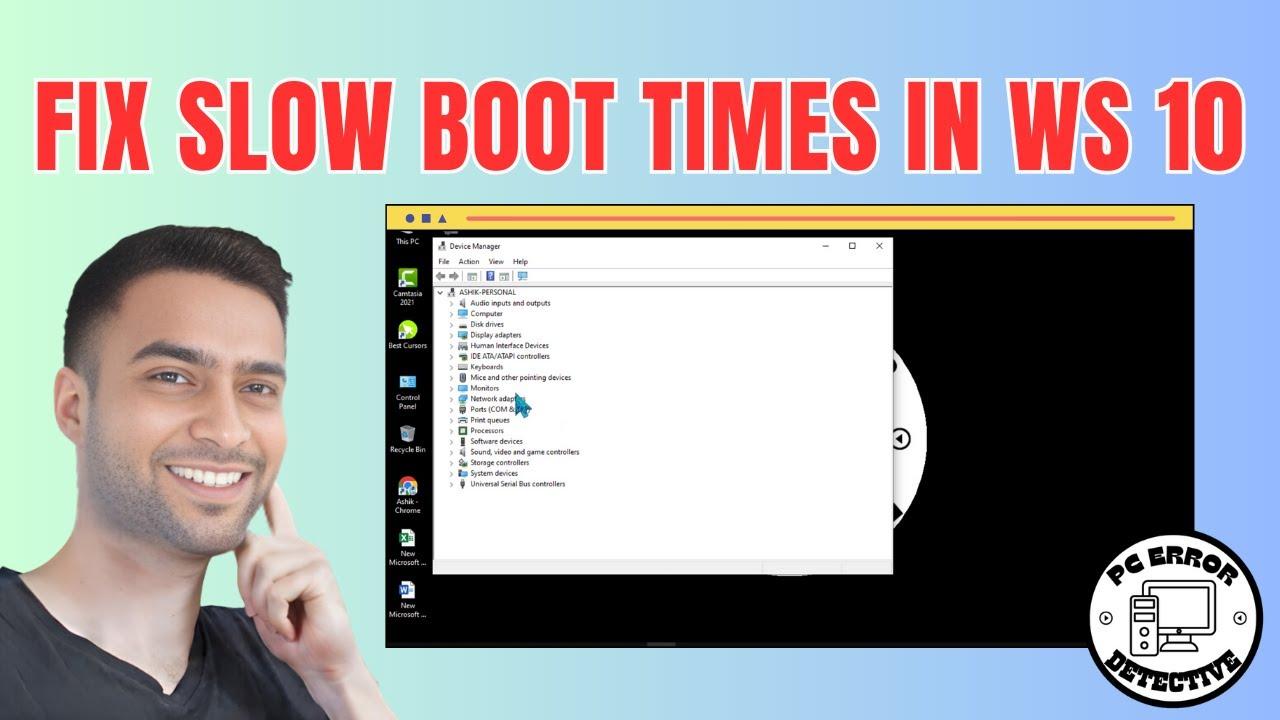
Can upgrading my hardware improve boot times in Windows 10 and 11?
Do you ever feel like it takes forever for your PC that runs on Windows 10 and 11 to boot up? Many other people are having this problem too. Slow booting times can be a real drag on productivity. Thankfully, there are many ways to resolve slow start-up times on Windows 10 as well as the latest release of Windows. Find out more about practical solutions, hints, and tips to speed up your initial experience.
A Casual Look at Why Your Computer Starts Slowly.
The Initial Thing That Slows Down Your Machine Startup Is.
Slow computer boot time is caused by several things, including:
Too many programs starting up: Too many programs starting up upon start-up causes significant delays in the boot process.
Disk fragmentation: As files get saved to and deleted from your hard drive over time, they become fragmented which slows down accessing them.
Outdated drivers: Outdated or faulty drivers also tend to increase boot duration.
Malware infections: Malware can hurt performance such as slow start-up speeds.
Hardware faults: Some problems with hardware like hard disk failure may result in longer startups too.
10 Proven Ways to Fix Slow Boot Times in Windows 10 and 11
1.Eliminating Useless Startup Programs.
Another way of ensuring that your system’s boot time is faster is to disable unnecessary startup programs.
Hold the Ctrl + Shift + Esc key simultaneously and it will open the Task Manager.
Click on the Start-up tab.
Look at the program list and disable those that you do not require during start-up.
2.Enable Fast Booting
Windows possesses a built-in feature named Fast Booting which can enhance boot speed.
Open Control Panel then find Power Options.
Select Choose what the power buttons do.
Choose Change settings that are currently unavailable.
Check the checkbox next to Turn on fast start-up, then save changes.
3. Check The Health Of Your Hard Drive
The hard drive plays a major role in boot speeds. So always check for its health.
Press Windows Run Dialog Box by hitting the Win-R keys.
Next type cmd and hit Enter.
Run the chkdsk /f command to look for and fix problems.
4. Make Space On Disk
A cluttered disk often slows down any computer as we know it. Use Disk Cleanup to free up some space on your PC.
Enter ‘Disk Clean up’ into the search bar on the Windows Start screen.
Follow any prompts to select files for deletion.
5. Disable Visual Effects
Windows visual effects consume resources. Disabling them boosts boot times.
Hit Win+R type System Properties Performance Enter button–
Choose Adjust for best performance from a dialog box of Performance Options.
6. Malware Scans And Antivirus Updates
Malware can slow down systems significantly so be sure to run a full scan regularly.
Use trusted antivirus software or Windows Defender if you need it to scan your machine.
7. Update Drivers
Updating your drivers may improve your PC’s performance greatly.
Right-click on the Start button and choose Device Manager from the list.
Refresh the drivers for the main hardware parts.
8. Optimize Your HDD
Defragmenting your hard drive is vital, especially when you have an HDD. However, Solid State Drives (SSDs) require a different kind of optimization.
Open the search bar and type Defragment and Optimize Drives.
Select any drive then click on Optimize.
9. Sometimes You Need A New Computer
Upgrading your hardware might change everything with your old PC. Just think about:
Using an SSD in place of an HDD.
Increasing the amount of RAM installed.
10. Install Windows Again
If none of the above works, reinstalling Windows 10 and 11 could be your only option. It will help bring back a clean state to the computer.
Back up all data files first.
Use the Windows installation media to perform a clean installation.
Benefits of Fixing Slow Boot Times
Implementing the above tips can enhance your user experience significantly:
-
- Improved Productivity: Quicker boot times mean less waiting and more doing.
-
- Less Frustration: Say goodbye to frustrating delays every time you start your PC.
-
- Extended Hardware Lifespan: Optimizing your system can help keep it running efficiently for longer.
Practical Tips for Maintaining Optimal Boot Times
Regular maintenance can further enhance your system’s performance. Consider the following tips:
-
- Perform regular software updates.
-
- Monitor startup programs periodically.
-
- Use disk optimization tools to keep your files organized.
Real-Life Case Study: Improving Boot Times
Take John, for example. He noticed his Windows 10 laptop took over 5 minutes to boot. After disabling unnecessary start-up programs and enabling Fast Start-up, his boot time improved to just under 30 seconds. Simple changes made a dramatic difference!
Conclusion
Slow boot times don’t have to be a permanent problem. With the tips provided in this article, you can optimize your fixed cursor moving down the Windows 10 and 11 boot experience. By disabling unnecessary start-up programs, enabling fast start-up, and maintaining your system, you can enjoy a much faster and smoother start-up. Take action today, and reclaim your time!



Leave a Reply